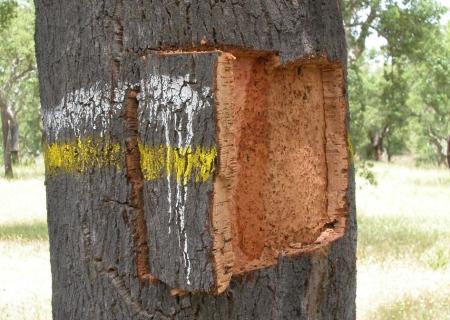
Objective:
The objective of the current work is the analysis of alternative sampling methods and intensities for estimating cork value before its extraction (price per unit of weight), considering the trade-off between sampling precision and costs. The dataset includes 30 sampling clusters for each of the 6 stands, where the measurement of the tree coordinates in each plot allowed for the simulation of several sampling methods and intensities, and the comparison of the percent errors and sampling costs.
Context:
Cork prices depend on its quality and thickness, ensuring the production of high-quality wine stoppers. It is very important to have a forecast of the cork value before its extraction. The Portuguese Forest Service supported the application of a sampling based on selecting trees along a zigzag transect. This method had some weaknesses from both statistical and practical standpoints. Thus, other alternative methods were pursued, looking for a compromise between sampling precision and costs, comparing plots with different fixed radii or number of trees of different sizes.
Contacts:
Margarida Tomé, magatome@isa.ulisboa.pt
Sonia Pacheco Faias, soniapf@isa.ulisboa.pt
Joana Amaral Paulo, joanaap@isa.ulisboa.pt
Further information:
Almeida A, Tomé M (2010) Field sampling of cork value before extraction in Portuguese ‘montados’. Agroforestry Systems 79:419–430, https://doi.org/10.1007/s10457-009-9260-8
Almeida A, Tomé J, Tomé M (2010) Development of a system to predict the evolution of individual tree mature cork caliber over time. Forest Ecology and Management 260(8): 1303-1314, https://doi.org/10.1016/j.foreco.2010.07.017
Faias SP, Paulo JA, Tomé M (2019) Inter-tree competition analysis in cork oak plantations as a support tool for management in Portugal, New Forests, https://doi.org/10.1007/s11056-019-09739-4